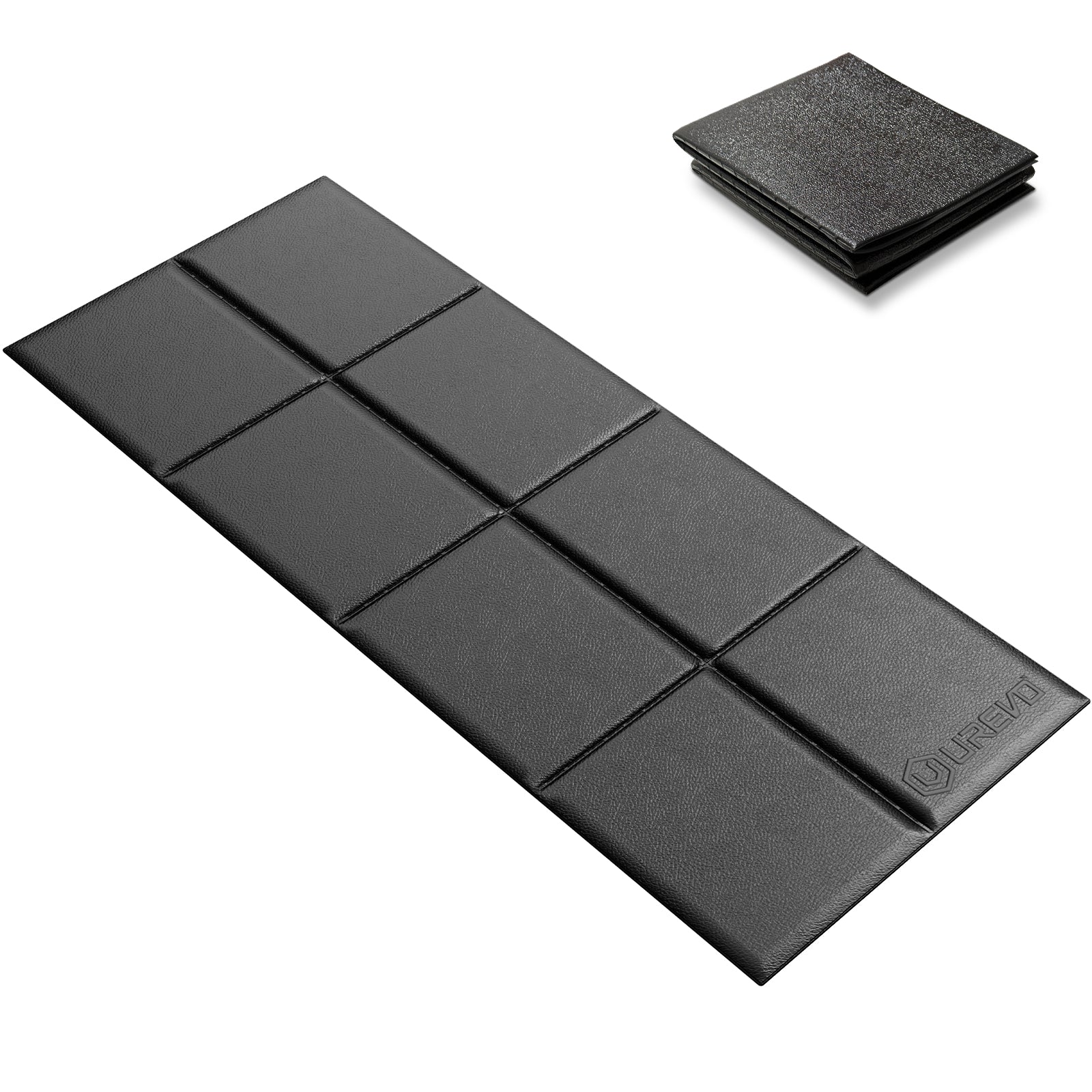Starting a fitness journey can be daunting, especially when treadmills come into play. However, with the right approach, beginners can transform trepidation into triumph. This article will guide you through a structured interval treadmill workout tailored for newcomers, highlighting how to incrementally build stamina and boost cardiovascular health in a manageable, enjoyable way.
Equipment and Setup
Before beginning your workout, getting to know your treadmill is essential to maximize its potential and ensure a safe, effective session. The Urevo Strol 1 Pro Treadmill comes equipped with features designed for convenience and performance. Its adjustable speed settings range from a gentle walk to a brisk run, accommodating all fitness levels. Additionally, the 3-level incline selection, with 5-9% options, can be adjusted with just one button, providing a more challenging workout that simulates uphill walking or running. This variety can help you burn more calories and build strength more efficiently. The LED display is user-friendly, showing your speed, time, distance, calories burned, and incline level clearly, allowing you to monitor your progress in real time.
Position your Urevo Strol 1 Pro Treadmill in a space that inspires you to stay active. Ensure the area is well-ventilated to keep cool and comfortable during workouts. If possible, place the treadmill facing a window or set up a screen for entertainment to make the time fly by. What makes the Urevo Strol 1 Pro particularly appealing for home use is its space-saving design. It quickly folds without needing to disassemble and can transform into an under-desk treadmill when the armrest is folded, perfect for multitasking fitness with work. This feature, coupled with its powerful yet quiet motor, ensures that your exercise routine can blend seamlessly into your living space without disruption.

Warm-Up Routine
The importance of a warm-up is paramount and serves multiple crucial functions. It gently readies your cardiovascular system by gradually increasing heart rate and circulation to your muscles. Start with a five-minute walk at about 2 to 3 mph, which should feel easy and allow you to speak comfortably. This pace helps acclimatize your body to physical activity without causing undue strain. After the walk, transition into a light jog at around 4 mph for the next five minutes. This incrementally raises your heart rate to a moderate level, increases blood flow, and reduces muscle stiffness, which is vital for the more demanding parts of the workout.
Interval Training Explained
Interval training involves cycles of high-intensity bursts followed by periods of lower-intensity exercise or rest. This contrast not only maximizes calorie burn-up to 30% more than a steady-state workout according to some studies-but also significantly boosts cardiovascular health. For beginners, starting interval training can be both challenging and invigorating. It introduces a dynamic component to workouts that can prevent boredom and stimulate faster fitness improvements. The key is to start with manageable high-intensity bursts that elevate your heart rate to about 70-80% of its maximum followed by recovery phases that bring it down to 60-70%.
Beginner Interval Workout Plan
Phase One: Introduction to Jogging
Initiate this phase with 20-minute sessions that blend walking and jogging to ease your body into aerobic exercise. Begin with a comfortable two-minute walk, then accelerate to a 30-second jog. This jog should be at a light pace where you can maintain a conversation without gasping for breath, typically between 4.5 to 5 mph. Repeating this sequence helps you gauge your body's response to increased exertion without overwhelming it. Focus on maintaining a rhythm and a comfortable pace, which will build your confidence and endurance.
Phase Two: Increasing Intensity
As you become more accustomed to the treadmill and your initial jogging intervals, incrementally increase the duration of your jogging to 45 seconds while maintaining the two-minute walk intervals. This slight increase in jogging time challenges your body and helps further build your aerobic capacity. Aim to jog at a pace that feels slightly more challenging yet still sustainable, around 5 to 5.5 mph. The objective during this phase is to balance exertion with comfort, ensuring each session feels challenging yet doable.
Phase Three: Building Endurance
In the final phase of this beginner plan, extend the jogging intervals to one full minute, alternating with one and a half minutes of walking. This adjustment introduces your body to longer periods of exertion, which is crucial for building stamina and endurance. Adjust the jogging speed to a more demanding pace, around 5.5 to 6 mph, depending on your comfort and fitness level. It's important to monitor your body's reactions; the intensity should be enough to increase your heart rate and breathing but not so much that you feel dizzy or excessively fatigued.

Cool Down and Recovery
The culmination of your workout should always include a cool down period, which is as crucial as the workout itself. After you complete the intense segments of your training, transition to at least five minutes of walking at a slow, leisurely pace (around 2 to 2.5 mph). This gradual decrease in intensity allows your heart rate to return towards its resting state more naturally and safely. This period also helps in the removal of lactic acid buildup in the muscles, which can decrease post-workout soreness.
After your walk, dedicate time to stretch thoroughly. Focus on the major muscle groups that you've engaged-calves, hamstrings, quads, back, and arms. Perform static stretches like pulling each leg towards your buttock to stretch the quads, reaching towards your toes while sitting to elongate the hamstrings, and interlacing your hands behind your back to open your chest. Hold each stretch for about 15 to 30 seconds, avoiding any bouncing or jerking movements to prevent muscle strains.
Additional Tips for Success
When embarking on a treadmill workout regimen, listening to your body is paramount. If you experience sharp pain or discomfort, reduce the workout intensity or take a break. Overexertion can not only lead to injuries but also to burnout and a loss of motivation. Adjust the workout's intensity based on daily fluctuations in your energy levels and physical condition. For example, if you feel particularly tired or sore on a given day, it might be wise to scale back the intensity or take an extra day of rest.
Remember, the key to successful fitness progression is consistency, not intensity. Regular, moderate exercise yields better long-term results than sporadic, intense workouts that can lead to injury.
Final Words
This beginner's guide to interval treadmill workouts is designed to help you start your fitness journey with confidence. By following these structured steps, you'll not only improve your physical health but also discover the joy and satisfaction of achieving your fitness goals. Stick with it, and soon you'll find yourself breezing through workouts you once thought were beyond your reach.
Leverage the features of the Urevo Strol 1 Pro Treadmill to keep track of your progress effectively. Celebrate each stride forward and use the treadmill's detailed LED display to monitor your improvements in speed, distance, and calories burned. Engage with a community of beginners by sharing your experiences and milestones, perhaps even encouraging friends or family to join you on their own Urevo treadmills. Together, every step you take is a move towards a healthier lifestyle. Embrace the journey, and remember: each session on your Urevo Strol 1 Pro Treadmill is a stride towards a better you.












